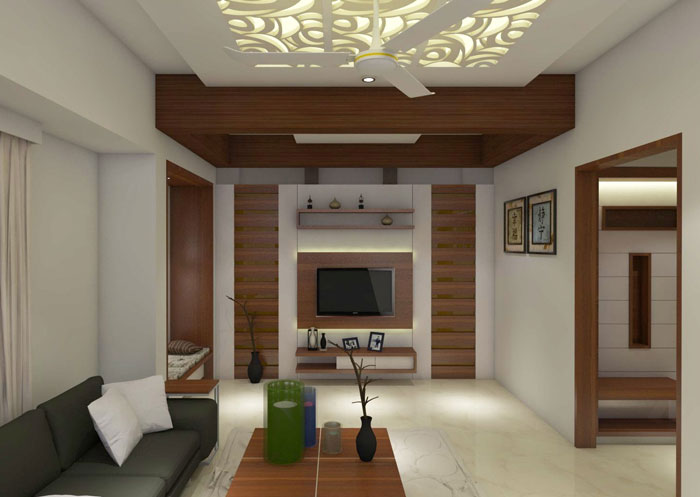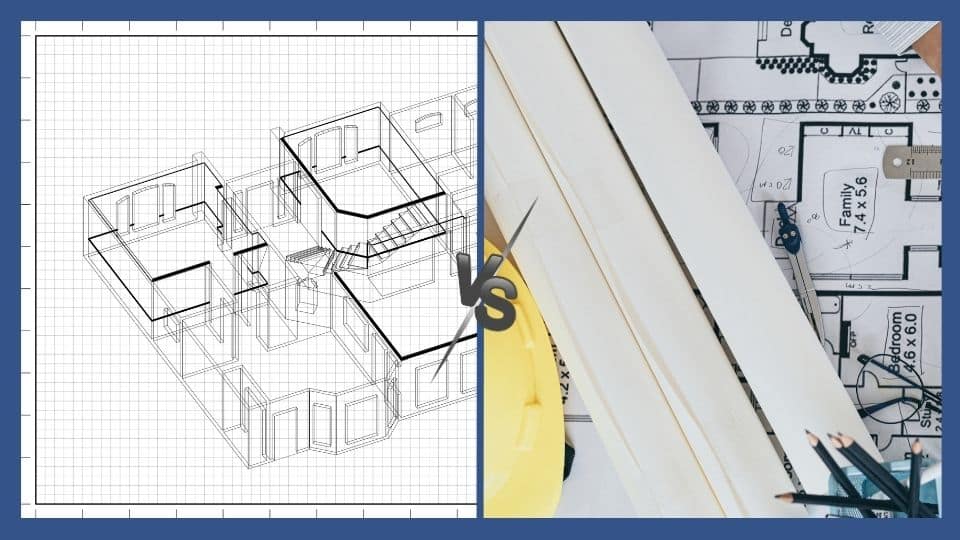Taking Full Advantage Of Visual Allure: The Synergy In Between Interior Design and Home Architect Methods
Comprehending the subtle interaction in between interior decoration and home architecture can considerably raise the visual allure of a space. This marital relationship of design techniques includes a thoughtful integration of architectural aspects with indoor formats, and a proficient application of principles such as contrast, rhythm, and balance. As we explore this synergy, we will certainly reveal means to produce aesthetically striking and useful settings that not just mirror personal design, yet likewise adjust to the dynamic needs of modern living.
Comprehending the Basics: Specifying Interior Design and Home Architecture
Interior design and home design, often intertwined, stand for the aesthetic and architectural facets of our living spaces. Interior layout is a diverse discipline that involves creating practical, safe, and cosmetically pleasing spaces inside a building. On the other hand, home style primarily focuses on the solid framework of a structure.
The Synergy Explained: Exactly How Interior Style and Home Design Intersect
Recognizing the synergy between indoor style and home architecture can open a globe of imagination and capability. When discussing this junction, the impact of design on insides is a crucial aspect to take into consideration. This conversation will certainly focus on the unifying layout concepts that mix these 2 fields right into a harmonious whole
Unifying Design Principles
While it may appear that interior decoration and home architecture are 2 distinct self-controls, they are actually deeply interconnected, forming a harmony that is necessary for developing unified space. Unifying layout concepts are the pillars that promote this symbiosis. The principles consist of balance, rhythm, focus, contrast, and consistency. These elements coalesce to offer a natural aesthetic appeal. Balance produces a sense of security, rhythm provides a sense of movement, harmony ensures unity, contrast triggers rate of interest, and focus accentuates crucial elements. The strategic application of these principles allows a smooth blend of aesthetics and function, improving the overall experience of the area. Fundamentally, these concepts serve as the bridge, joining interior decoration and building techniques.
Architectural Influence on Insides
The intertwining of interior decoration and style ends up being much more obvious when one takes into consideration the architectural influence on interiors. Building elements are innate to a room's functionality and visual appeals, forming the design from the onset. Columns, arcs, light beams or stairs, for example, offer both ornamental and architectural objectives. They can separate areas, produce centerpieces or imbue a room with a particular vibe. Factor to consider of percentage, texture, and light additionally stem from building influences. Inevitably, design mold and mildews the canvas whereupon interior designers function. Their synergy is therefore undeniable: architecture develops the structure, which indoor design improves with color, appearance, and decor. This symbiotic relationship makes certain a harmonious equilibrium in between feature and appeal, enhancing the aesthetic allure of any type of area.
Key Concepts in Balancing Interior Design and Home Style
Striking an equilibrium in between functionality and aesthetic appeal is a basic facet of balancing interior decoration and home style. An equally essential principle is the assimilation of lasting layout to create environmentally friendly and energy-efficient homes. Understanding and checking out numerous architectural styles can also play an essential duty in accomplishing an unified layout. Luxury home architect.

Stabilizing Performance and Aesthetics
Stabilizing functionality and looks in interior style and home design arises as one of the extremely important principles to consider. Aesthetic appeal boosts the mood and impacts the understanding of room, whereas performance guarantees use and comfort. Similarly vital is the effective plan of the room, with a well-planned format adding substantially to the harmony between capability and appearances.
Sustainable Style Integration
In maintaining the balance in between capability and visual appeals, one should also think about the assimilation of lasting design principles. This approach not just boosts the visual allure of a room yet additionally ensures its longevity and lowered ecological influence. The vital hinge on picking materials that are environment-friendly, sturdy, and appealing. This consists of natural, recycled, or low-impact products that add to a healthier and a lot more sustainable world. Designers and designers can likewise integrate energy-efficient systems, such as photovoltaic panels or energy-saving home appliances. Furthermore, making sure good indoor air quality through sufficient natural illumination and air flow is crucial. An unified combination of indoor layout and home style, led by sustainability, can create spaces that are lovely, functional, and eco friendly.
Discovering Architectural Designs
While there are a wide variety of architectural designs to explore, it is vital to comprehend that each one lugs go to my site its one-of-a-kind principles that can considerably influence the harmonization of interior layout and home style. These styles, ranging from the elaborate Baroque to the minimalist Modernist, carry distinct ideologies and looks that, when properly comprehended and made use of, can create homes that are not only aesthetically stunning yet also sympathetically incorporated in regards to layout and design. Choosing an architectural design is not just concerning individual aesthetic choice; it has to do with selecting a design language that speaks to the home owner's lifestyle, philosophy, and desires, creating a home that is a true reflection of its citizens.
Case Studies: Exceptional Examples of Style and Design Harmony
Diving into some phenomenal study supplies an extensive understanding of just how layout and style can harmoniously merge to develop compelling and practical areas. The renowned Fallingwater home, made by Frank Lloyd Wright, exquisitely demonstrates this synergy. Wright's design masterfully incorporates your house with its surrounding landscape, while the interior mirrors the outside's natural forms. An additional example is the minimalistic Tadao Ando's Church of Light in Japan. The designer achieved a perfect equilibrium in between simplicity and dramatization, utilizing raw concrete and light. Inside, the plain, marginal style creates a feeling of tranquility and spiritual contemplation. These examples show the importance of synergy in between interior design and design in achieving visual and practical success.
Practical Tips: Enhancing Your Home's Aesthetic Charm
Attracting motivation from the case researches of architectural and style harmony, house owners too can carry out some useful strategies to boost their home's visual allure. An unified blend of read what he said colors, textures, and lights can improve a space, developing a warm and inviting ambience. Inevitably, the aesthetic allure exists in stabilizing capability with design, creating a home that is both stunning and comfortable.

Future Trends: How Modern Techniques Are Transforming Interior Design and Style
As the world progresses, so do the fads in indoor design and design. Modern methods are significantly focusing on sustainability, integrating energy-efficient styles and environmentally friendly products. Technology plays an important function, with smart homes becoming the norm, integrating AI and IoT for enhanced capability. Additionally, minimalism remains to acquire grip, highlighting simpleness, capability, and clutter-free rooms. This is commonly combined with biophilic design, attracting motivation from nature and advertising health and wellbeing. The pandemic has increased the need for adaptable, multi-purpose rooms, obscuring the lines in between work and home. These fads show a shift in the direction of designs that are not just aesthetically pleasing, however click reference additionally ecologically mindful, technically advanced, and adaptable to changing way of livings.
Conclusion
Finally, the integration of interior decoration and home design strategies is a vibrant technique to enhancing aesthetic appeal. By leveraging crucial principles like rhythm, equilibrium, and comparison, and incorporating components of modern-day living, developers can develop versatile, aesthetically pleasing atmospheres. With recognizing this harmony, home owners can make educated choices that not only boost their home yet likewise add to their overall well-being.
Understanding the subtle interplay in between interior style and home design can considerably elevate the visual allure of a living space.Indoor design and home design, usually intertwined, represent the architectural and aesthetic aspects of our living spaces.While it may appear that interior style and home architecture are two unique self-controls, they are in fact deeply interconnected, forming a harmony that is essential for producing harmonious living areas.The intertwining of interior layout and style ends up being also a lot more evident when one thinks about the architectural influence on interiors. A harmonious combination of interior design and home design, assisted by sustainability, can create areas that are lovely, functional, and ecologically pleasant.